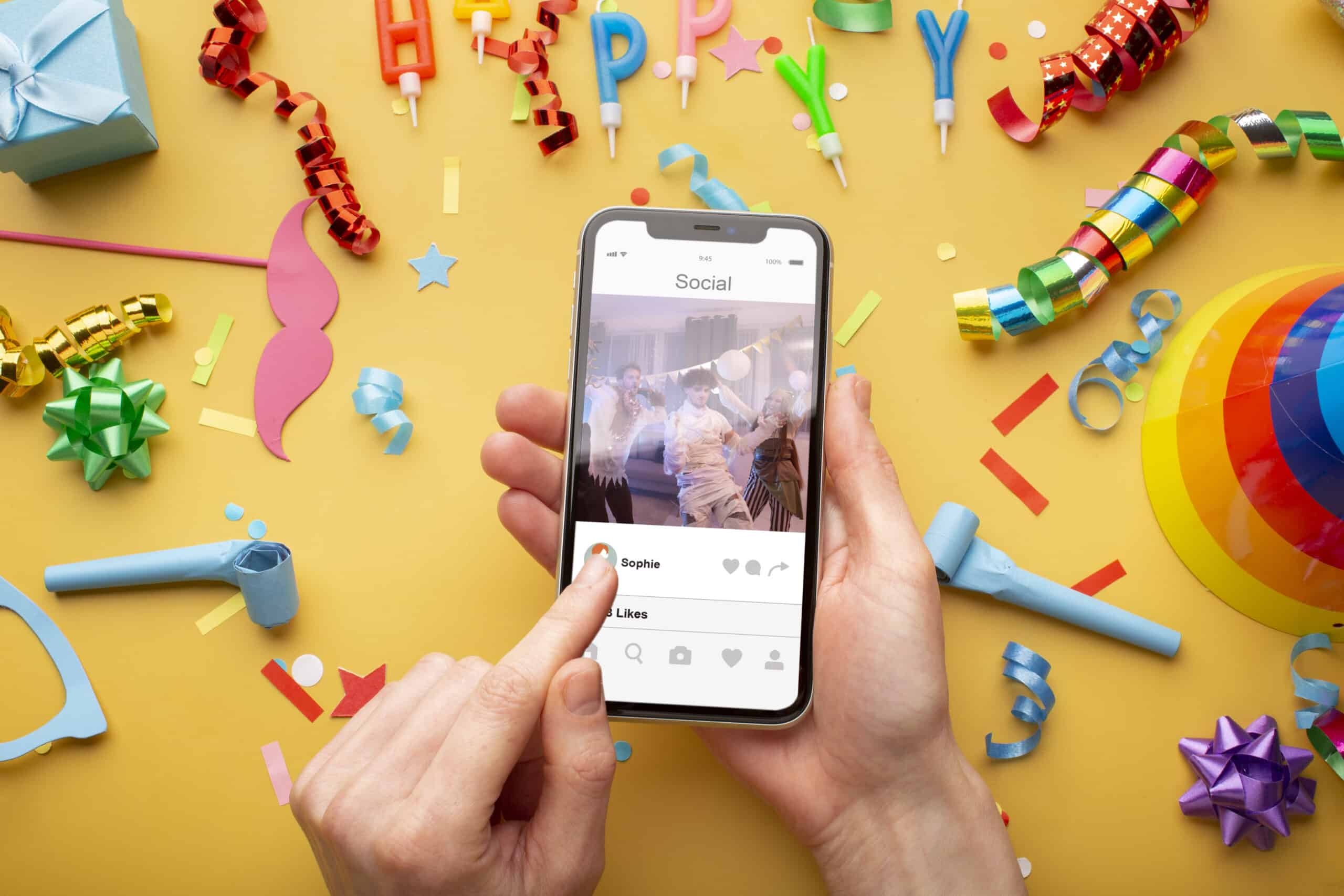
RCS vs SMS: Which Messaging Tool Fits Your Business Best?
When it comes to business texting, you might be asking if you should stick with SMS (Short Message Service) or start using RCS (Rich Communication Services).
While RCS offers more advanced features like branded messages, it’s still limited in reach and depends on the customer’s device, carrier, and data connection.
SMS marketing remains the better choice if you want speed and simplicity. It doesn’t require apps or special phone settings and delivers messages instantly.
In this guide, we’ll break down the key differences between RCS and SMS. We’ll also show you how a business texting solution helps you send SMS campaigns with interactive media.
What is SMS?
SMS is the original texting technology used to send text-only messages up to 160 characters.
Unlike messaging apps, SMS is universally supported. It doesn’t require any extra app or platform, which makes it accessible to all mobile devices, including older models.
This is a big reason many businesses still use it for updates, reminders, and alerts. SMS relies on built-in network functions handled by your phone carrier.
Common Business Uses for SMS
Businesses use SMS for a variety of reasons. It’s fast, easy to set up, and doesn’t require customers to download an app. Here are some popular use cases:
- Appointment reminders from clinics, dental offices, or repair services
- Two-factor authentication (2FA) to protect user accounts
- Delivery updates and shipping notifications from eCommerce stores
- Promotional text messages for sales, discounts, or events
- Customer service follow-ups and feedback requests
Why SMS Still Works for Business Messaging
While some may look at SMS as an “old” technology, it still does the job better than many newer options, especially when it comes to reach and reliability.
One reason is that SMS works without needing an active internet connection, which means it delivers through cellular networks even in areas with weak signal or no Wi-Fi. If your customer has a mobile phone, you can reach them by text.
Platforms like Textellent give you powerful features on top of standard SMS. You can send bulk SMS, segment contact lists, and deliver Multimedia Messaging Service (MMS) content alongside plain messages.
This gives your campaigns more visual appeal while keeping the reach that SMS already provides. Sign up for a free trial or book a demo today!
What is RCS?
RCS is a newer type of mobile text message marketing. It was designed to improve SMS by adding features like images, video, live buttons, typing indicators, and read receipts.
You’ll see RCS active inside the Google Messages app and similar apps that work with carriers. If you and the other person enable RCS, and both networks support it, the message is sent as an RCS chat. If not, the message switches back to SMS.
Some key features of RCS include:
- Branded messaging with your business logo and name
- Rich media options like video or high-resolution multimedia content
- Interactive elements like quick replies or carousels
- Delivery notifications to know the message was received
- Read receipts typing indicators so you know when someone is replying
- Group chat capabilities for shared conversations
Why RCS Adoption is Slower
In late 2024, Apple confirmed support for RCS, and the update has now rolled out to iPhones in 2025. This means RCS is no longer limited to Android, and messages between iPhone and Android users can now include richer content, without falling back to plain SMS or MMS.
Still, even with Apple’s support, RCS hasn’t entirely replaced SMS for several reasons:
- Many phones don’t support receiving RCS messages. Some users also may not have the correct settings, app, or carrier support.
- It depends on the data or Wi-Fi connection. Therefore, they won’t work in areas with poor coverage or when a user’s data is off.
- Business messaging with RCS is more complex. You need to register with approved messaging partners, and setup takes longer than traditional SMS platforms.
- Many users still treat RCS messages the same as SMS. Some don’t recognize the added features or understand when they’re being used.
Because of these limits, many businesses still rely on SMS as their main way of reaching customers.
SMS works everywhere, does not require internet, and is supported by every phone. However, if you want to add rich media, RCS is starting to play a bigger role now that iPhones and Android devices can send and receive it.
Textellent helps you stick with SMS while staying ready to send RCS messages where possible. The platform handles SMS segmentation, message delivery, and reporting, so you don’t need to guess which format to use.
How Business Texting Has Grown
Business texting has changed a lot over the past 10 years. What started as a way to send basic alerts or reminders has now become a major tool for marketing, customer service, and real-time updates.
At first, most businesses used SMS messages to send short, simple content. SMS doesn’t need internet access, doesn’t depend on device type, and works even on older phones.
That’s why it’s been the go-to channel for booking confirmations, delivery updates, and limited-time offers.
However, as customer expectations changed, you likely noticed that plain text wasn’t enough when you want to include photos of your products or a way for customers to chat without calling. That’s when richer forms of messaging started to matter more.
Should You Use SMS or RCS?
As more mobile phone users began to expect better messaging experiences, the transition toward improved messaging expanded. With the rise of RCS, businesses looked to enable RCS messaging to take advantage of new features that go beyond what SMS can do.
RCS messaging supports media content, branding, and reply shortcuts through your customer’s default messaging app. However, it only works if the customer’s phone, carrier, and app settings have matching configurations.
Even in 2025, many iPhone users still default to SMS, and that’s why RCS is not a complete replacement.
Therefore, RCS is a next-generation messaging protocol. While its modern messaging features are helpful, they’re not available to everyone. You would still need to weigh reach against features.
Why Is SMS the Right Fit?
SMS is still the most dependable way to do that. It doesn’t require special formatting or setup and works on every phone, every time.
With Textellent, SMS becomes even more powerful. You can personalize your campaigns, automate replies, and schedule outreach without relying on mobile data to ensure delivery. When your messages must get through, SMS remains the safe choice.
Textellent also supports media with built-in MMS, which gives you the option to send rich text messages and visual updates in a single thread. It delivers high-impact transactional messages that reach right where your customers are most likely to see them.
Start Reaching More Customers with SMS
With billions of daily texts being sent and opened, SMS continues to lead in customer communication.
While RCS may be useful for visual messaging, its support depends on compatible devices, registrations, and internet access. Its setup and delivery may be delayed or fail without end-to-end encrypted pathways or matching settings across RCS-enabled devices.
With Textellent, you don’t have to wait for full RCS support to deliver modern, engaging experiences.
Textellent’s built-in MMS capabilities let you create rich messaging campaigns today. You can send images, GIFs, PDFs, and branded visuals to capture attention and drive engagement.
Textellent Key Features
- Send SMS and MMS messages
- Include media like images, appointment cards, or coupons
- Add branding elements such as logos or custom visuals
- Reach every mobile user regardless of carrier or device
- Run campaigns, reminders, and replies all from one dashboard
- Use SMS automation tools to personalize messages
Textellent gives you the flexibility of SMS and the impact of visual messaging, so you can engage more people, drive more action, and stay ahead of the curve.
If you’re ready to move past basic texting and start sending messages your customers see, sign up for a free trial or request a demo consultation with Textellent today!
FAQs About RCS vs SMS
Is RCS better than SMS?
RCS offers more features than SMS, such as image sharing, action buttons, read receipts, and typing indicators. However, RCS only works when the customer’s device, carrier, and app all support it. If one of those isn’t compatible, the message falls back to SMS.
So while RCS may look better, SMS is still more reliable, and most businesses continue to lead with SMS.
With platforms like Textellent, you can get the consistency of SMS and the added benefits of MMS, especially in areas with inconsistent data connectivity.
Why is my phone using RCS instead of SMS?
If you’re using a newer Android device with Google Messages, your phone switches to RCS when available.
It does this automatically when users have compatible devices and networks. This lets you share media and enjoy features like message reactions and typing indicators.
What are the disadvantages of RCS?
RCS requires a data connection or Wi-Fi. It doesn’t work on all networks, and until recently, wasn’t supported on iPhones. Even in 2025, not all customers have RCS turned on or configured.
Sending RCS messages requires registration with approved providers and can take extra time to set up. This is why many companies still rely on SMS, especially when customers themselves are unclear about SMS.
RCS compatibility also varies by Apple device, and some customers may not be able to receive rich content if they haven’t enabled the proper settings or if they are on limited cellular data plans.
Why does my phone keep switching from RCS to SMS?
This happens when RCS can’t complete the message, either due to a poor connection, an incompatible phone, or temporary issues with the app. Many supported devices will automatically revert to SMS to avoid message failure.
Your phone is designed to keep the conversation going by switching formats as needed. That fallback is helpful when data usage is limited or when internet access is unreliable.
This is why platforms like Textellent make it easy to continue messaging through SMS and MMS, so you’re not dependent on device compatibility or multimedia support for your communications to work.





